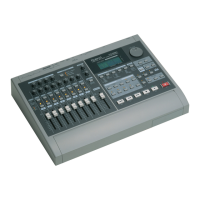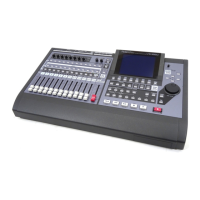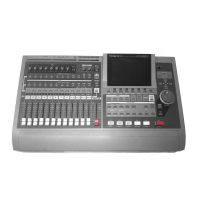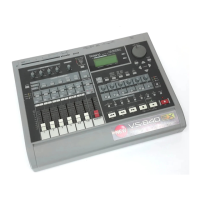9—Working with Input Signals
Roland VS-2400CD Owner’s Manual www.RolandUS.com 129
Designating the Master Clock for Digital Audio Input
When you’re receiving digital input signals from a connected R-BUS device, either
device can serve as the master—be sure to set up the other as a slave.
However, in order for the VS-2400CD to successfully receive digital audio from other
external digital audio devices, the VS-2400CD should usually be slaved to an external
master clock. Here’s how to set up a successful master/slave digital audio relationship:
1. Hold down SHIFT and press F4•UTILITY.
2. Press PAGE until “Proj” appears above F3.
3. Press F3 (Proj) to view the DIGITAL I/O parameters.
4. Press
, if necessary, to select the MASTER CLOCK parameter.
5. Turn the Time/Value dial to select the desired master word clock source.
Completing the Master/Slave Setup
Make sure that the device designated as the master clock source uses its internal clock
as its timing reference. On the VS-2400CD, set MASTER CLOCK to INT in Step 5 on
Page 129.
To learn how to configure each external digital device, consult its documentation.
When you select: The master clock comes from:
INT the VS-2400CD.
R-BUS the device connected to the VS-2400CD’s R-BUS connector.
DIGITAL IN the device connected to the activated COAXIAL or OPTICAL
IN jack (Page 127). The currently active connector is shown to
the right of “DIGITAL IN.”
EXT TIME CODE the device connected to the appropriate jack for the time code
selected as the external sync source on the UTILITY menu’s
SYNC PARAMETER screen (Page 296).
VS2400OMUS.book 129 ページ 2006年2月28日 火曜日 午前11時12分

